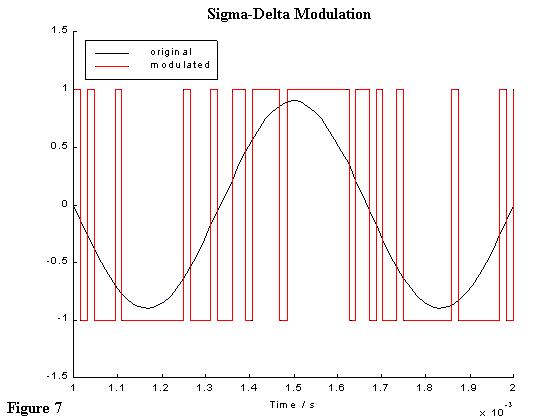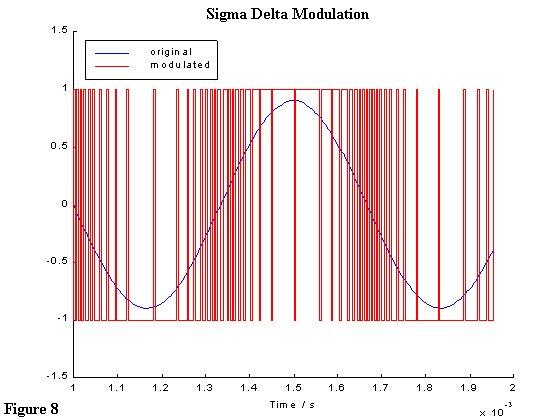
Modifying the delta modulator into a sigma-delta modulator can eliminate the above problems. The development of sigma-delta modulation (SDM) began in the 1960s, to overcome the limitations of delta simulation. Sigma-delta systems quantize the delta (D, difference) between the current sigma and the sigma (sum) of the previous difference (it is a closed loop feedback system). An integrator is placed at the input of the quantizer; the signal amplitude is constant at a varying frequency (similar to frequency modulation, FM). Thus the SDM is also known as the pulse density modulator (PDM, which is equivalent to PWD). In the same way as PCM, SDM quantizes the signal directly, and not its derivative as in the case of delta modulation. Thus the quantization range is dependent upon the maximum signal amplitude and not on the signal spectrum. To achieve high resolution as in the PCM high sampling rates are required. For instance, in CD players with a maximum allowable input signal of 20kHz (44.1kHz sampling rate) and 16X oversampling, the internal sampling frequency is at 705kHz (44.1kHz x 16). In this way quantization noise is spread from dc (0Hz) to 320kHz (16 x 20kHz). SDM adds noise-shaping benefits as the integrator "kills" high frequency noise.

Figure 6 shows a first order (single integrator) SDM encoder. The input to the quantizer is the integral of the difference between the input and the quantized output. The difference between the input signal and the output signal approaches zero; the average value of the clocked output tracks the input. The integrator forms a low-pass filter on the difference signal thus providing low frequency feedback around the quantizer. This feedback results in a reduction of quantization noise at low (in-band) frequencies. Unlike PCM and DM, the noise is not white, but shaped by a first-order high-pass characteristic. In practice, the in-band noise floor level is not satisfactory with first-order SDM.
Considering the same example as in the delta modulator case, that is 1.5kHz signal at a 4kHz sampling -1V to 1V peak to peak, Figure 7 shows an SDM signal at 16x oversampling.

Figure 8 shows the same signal at 64x oversampling.

The same audio quality can thus be achieved with a lower bit conversion, something that seems unrealizable at the first glance as with fewer quantization levels the effect of noise can be more significant as it is spread over fewer bits in the audio pass-band (noise carries more "weight" to the overall signal amplitude). However using a high enough sampling rate low-bit conversion, the in-band noise can be better attenuated (or shaped-out) from the audio frequency band that can even exceed the noise immunity that the strict Nyquist-rate sampling offers (PCM). The latest CD audio technology uses SDM DAC converters to convert the bits stored in a compact disc to an analog signal that we can hear through a loudspeaker. The 44.1kHz sampled data stored in a CD is re-quantized and oversampled with an SDM modulator and then converted back to an analog signal using an SDM decoder (DAC). The advantage of using a 1-bit converter in CD audio technology is that it offers better tolerance for small variances in the components that is uses against the more complex, harder to implement multi-bit decoders (and encoders) which use a complex inner structure of voltage references using a network of resistors as described earlier. Since there are so many components, the variance of the value of one component affects the other components (as they form a "chain") thus affecting the overall performance and audio quality reproduction. Another matter of concern is the cost: 1-bit converters offer a better cost to performance ratio to multi-bit converters (they can even offer better performance at a lower cost!) that is of great concern in the competing audio and information industry.